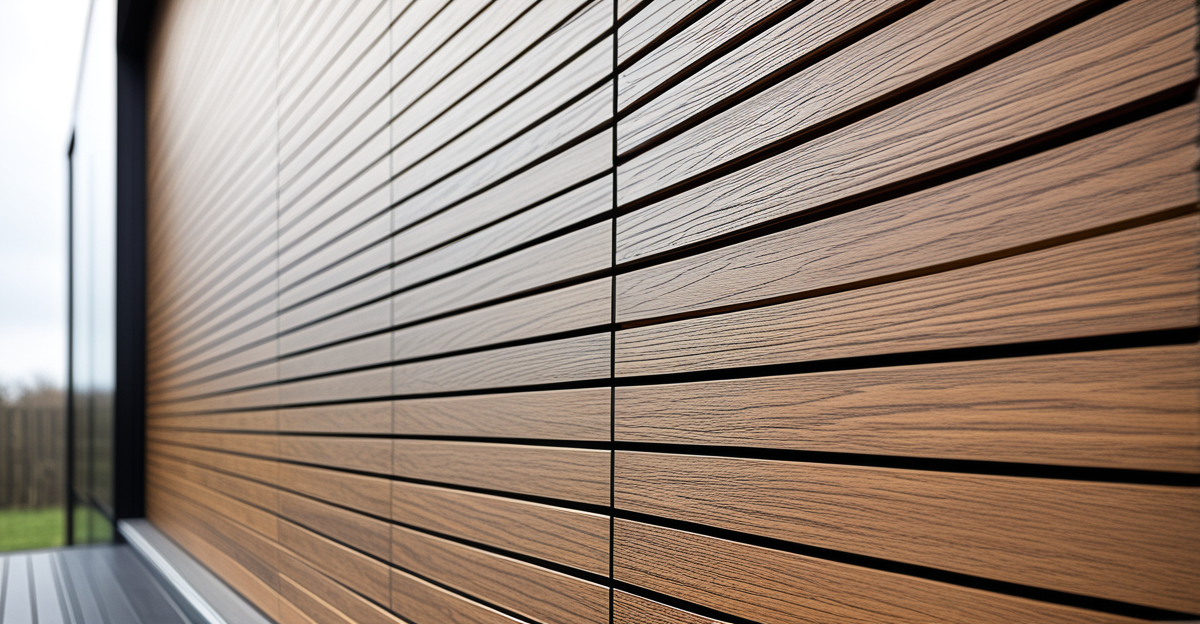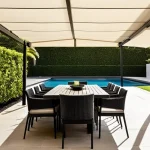Modern open-joint WEO cladding merges natural wood aesthetics with cutting-edge composite technology. Its distinctive design offers enhanced ventilation, durability, and a rhythmic façade that redefines stylish spaces. Ideal for renovations or new builds, WEO cladding balances visual warmth with low maintenance, making it a smart, contemporary choice for those seeking lasting elegance and performance.
Understanding WEO Modern Open-Joint Cladding: Design, Benefits, and Core Features
For those seeking modern open-joint cladding systems that deliver a striking balance of design and resilience, FIBERDECK’s WEO composite cladding stands out. This page explains it in detail: FIBERDECK. The panels are distinguished by a contemporary false open-joint profile that masterfully mimics the appearance of natural wood grain, capturing subtle color nuances and a realistic tactile texture without the complications of traditional timber. An advanced co-extruded surface layer equips each board with weather-resistant capabilities, securing long-term defense against UV rays, moisture, and daily wear in demanding climates.
Sujet a lire : Step-by-Step Guide to Installing Sustainable Wool Carpeting in Your Brighton Home
Key structural benefits include a built-in ventilation gap. Clever lugs on the reverse of each WEO panel maintain airflow, which sharply reduces moisture buildup and promotes a durable building envelope. The ventilation in open joint cladding design helps manage rainwater efficiently, using a trapezoidal profile to prevent stagnation and improve longevity.
Beyond ruggedness, WEO panels blend eco-conscious material choices. They are composed of 95% recycled content, earning recognition as low maintenance and VOC-free. Installation remains straightforward, while support for vertical or horizontal fitting empowers architects to achieve diverse aesthetic design with open joint panels and custom façade effects.
A lire également : Explore contemporary open-joint weo cladding options for chic interiors
Product Engineering, Materials, and Installation Explained
WEO cladding installation guide begins with understanding its modern open-joint cladding systems—designed for contemporary facade solutions and effective rain screen cladding technology. Panels use a mix of recycled wood particles (about 45%), HDPE, and non-toxic additives, resulting in durable building envelope materials. This eco-friendly composition directly contributes to the environmental impact of facade materials and supports sustainable cladding options.
The next step covers engineering details. WEO’s open-joint profile, engineered for maximum airflow, ensures ventilation in open joint cladding, improving moisture management with open joint systems, and reducing risk of rot. Each board features co-extruded weather-resistant exterior cladding, providing low maintenance exterior cladding with impressive UV and water resistance. The precise tongue and groove system also means clear sound insulation with WEO cladding and options for both vertical or horizontal installation—fitting a range of residential facade cladding solutions and modern architectural trends in cladding.
Installation challenges and solutions include supporting frameworks spaced for stability and rain drainage, correct use of prefabricated cladding panels, and innovative fastening methods for durable fixing. Innovations in WEO panel fabrication, such as impact-resistant trapezoidal profiles, further ensure longevity of open joint cladding and future-proof building facade durability.
Modern Aesthetic and Functional Advantages for Buildings
Aesthetic design with open joint panels enhances the appearance of structures by providing authentic wood grain textures and diverse color customization for exterior cladding. Panels like WEO cladding make it possible to achieve visually rhythmic façades by varying open joint spacing standards and arrangement, which aligns with the most current modern architectural trends in cladding. This versatility supports both bold and understated residential facade cladding solutions as well as striking commercial applications.
The design flexibility of open joint facades allows architects and builders to combine vertical and horizontal orientations, modifying a building’s height or depth perception easily—beneficial for both new and retrofit projects. Open joint cladding structural support is engineered for lightweight installation, which allows for efficient prefabricated cladding panels and reduces strain on the building envelope.
Modern open-joint cladding systems like WEO also deliver practical performance. Their rain screen cladding technology offers superior moisture management with open joint systems, enhancing weather resistance and preserving the thermal performance of open joint facades. The built-in ventilation in open joint cladding promotes airflow, which improves sound insulation with WEO cladding, minimizes condensation risk, and can optimize energy efficiency improvements for all building types. Fire resistance in open joint cladding and easy compatibility with ETICS ensure lasting, safe, and sustainable cladding options for diverse architectural needs.
Sustainability, Certifications, and Market Insights
WEO composite cladding stands out among sustainable cladding options thanks to its manufacture from 95% recycled materials. This eco-friendly construction material, combining reclaimed wood fibers and recycled high-density polyethylene, minimizes the environmental impact of facade materials without compromising on aesthetics or durability. The meticulous life cycle assessment of cladding underscores its low energy footprint and excellent recyclability, positioning it at the forefront of sustainable supply chain for cladding solutions.
Certifications and compliance contribute to building trust and ensure product performance. WEO®35 cladding meets the rigorous demands of sustainable building certifications, holding the French QB-15 label and ATEx evaluation, as well as CE marking for European standards. These endorsements reinforce the credibility of cladding material recyclability, environmental impact of facade materials, and compatibility with green building ratings, meeting modern building code compliance demands with confidence.
Market analysis reveals WEO cladding market trends are driven by growing demand for cost-effective exterior upgrades and practical, eco-conscious solutions. The robust warranty—20 years for color retention—and minimal routine maintenance further enhance value, supporting both residential and commercial exterior insulation compatibility requirements and ensuring longevity in harsh climates.











